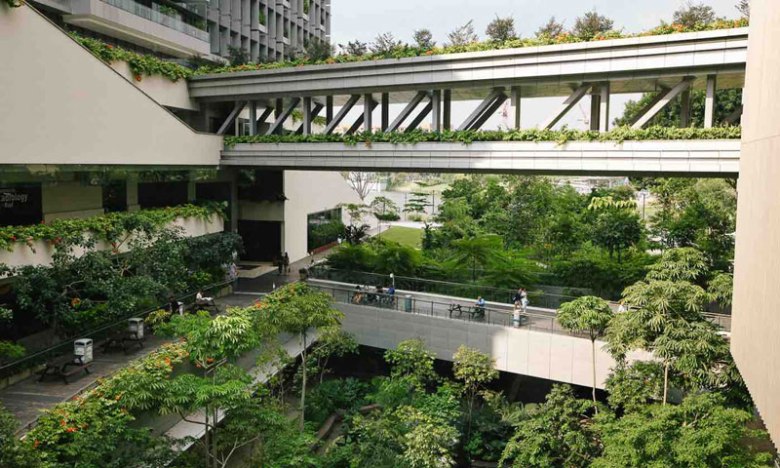On Monday I reviewed Lucy Jones’ book Losing Eden, all about nature connection and mental health. It describes how views of trees and plants, or hearing birdsong, can help people to relax and heal faster when in hospital. So what would it look like if a hospital was designed with that in mind, and integrated plants and nature right from the start? And would it work?
For an answer, consider Khoo Teck Puat Hospital in Singapore, a case study in Lucy Jones’ book and one that I earmarked straight away as a building of the week entry.

Right from the start, the architect was briefed to create a building that lowered visitor’s blood pressure and created a healing environment. Without ever compromising on the needs of a modern hospital, it incorporates balconies, planters, waterfalls and green walls. There are seven roof gardens, including an organic food garden with over 100 fruit trees, and where local volunteers grow food for the kitchens. Other gardens are tailored to the needs of particular patients, such as the dementia garden.
The building has three blocks overlooking a courtyard and opening out onto a lake. It is oriented so that the prevailing winds skim across the water and blow through the building, providing cooling breezes and natural ventilation in a humid climate. The central courtyard is full of trees, and the gardens extend up the walls so that the whole building feels like it’s wrapped around a forest. It has its own microclimate, and the courtyard is 2 degrees cooler than the outside of the building.
This natural cooling and ventilation keeps air conditioning costs down, along with natural light and a bank of solar panels on the rooftops. Water usage has also been reduced. The lake is part of the hospital grounds, and as well as a walking trail around it for patients, it feeds the water features and irrigates the plants, while providing stormwater run-off.
When the former CEO drew up the specifications for the building, he included targets for biodiversity. He wanted the building to eventually include 100 different species each of butterflies, birds, fish, edible plants, fruit trees and medicinal plants. Some of these are well on their way. Since opening, the number of butterfly species has risen from three to 83, and identification boards encourage patients and visitors to observe and record what they see.
Most people want to spend as little time as possible in hospitals, but this one has many areas that are open to the public. There are little niches among the gardens for quiet reflection, gazebos and benches where people can meet, and it’s become a favourite spot for students.
Khoo Teck Puat Hospital is an extraordinary example of biophilic architecture, but that would be meaningless if it didn’t perform as a hospital too. And fortunately, it outperforms every other hospital in Singapore for user satisfaction.
- You can find out more from the ebook A Healing Space, published by hospital and available online.

Fantastic !!!